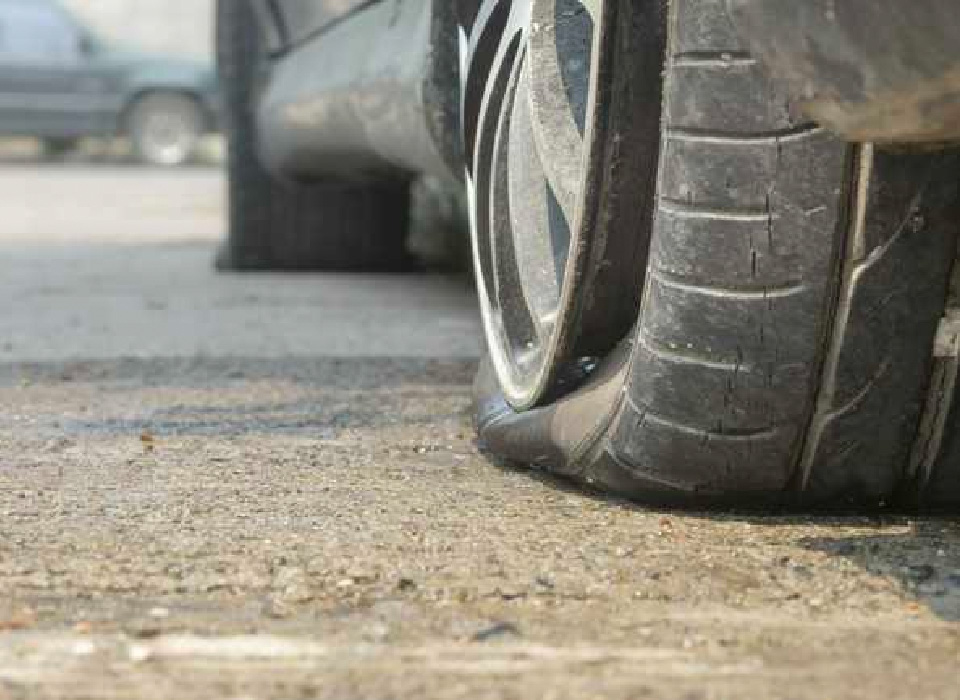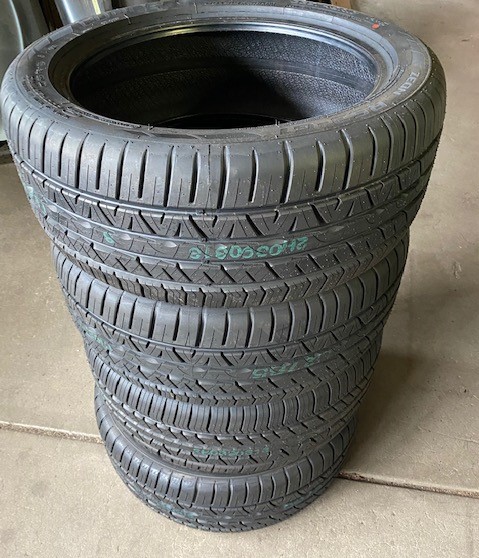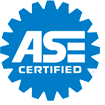
The low tire pressure light comes on. You pull over, get out of the car, and investigate.
You're hoping it's just the cold weather lowering the pressure. But then you see the nail that's mercilessly stabbing one of your brand new Subaru tires to death.
Dang it!
So what do you do now? Should you repair the tire or replace it?
Read on to find out! Learn the difference between repairable and irreparable tire damage from the guide below.
Sidewall Punctures
Sidewall punctures cannot be repaired. The reason for this is that the sidewall of the tire is constantly bending and flexing when the car is driven.
Any attempted patch jobs will absolutely come undone under the strain of this. In other words, such a tire is a ticking timebomb—an inevitable blowout waiting to happen. Driving with a patched sidewall puncture literally puts lives at risk.

The low tire pressure light comes on. You pull over, get out of the car, and investigate.
You're hoping it's just the cold weather lowering the pressure. But then you see the nail that's mercilessly stabbing one of your brand new Subaru tires to death.
Dang it!
So what do you do now? Should you repair the tire or replace it?
Read on to find out! Learn the difference between repairable and irreparable tire damage from the guide below.
Sidewall Punctures
Sidewall punctures cannot be repaired. The reason for this is that the sidewall of the tire is constantly bending and flexing when the car is driven.
Any attempted patch jobs will absolutely come undone under the strain of this. In other words, such a tire is a ticking timebomb—an inevitable blowout waiting to happen. Driving with a patched sidewall puncture literally puts lives at risk.
Shoulder Punctures
The shoulder is the rounded area that connects the sidewall to the tread face. This section of your tire flexes more than any other while you drive. Also, because of its curved shape, it's near impossible to apply a patch or plug there, anyway.
For these reasons, punctures in this part of the tire are also irreparable. Any tires punctured in the sidewall or the shoulder must be replaced, for the sake of public safety.
Tread-Face Punctures
Punctures on the tread face of the tire are the only punctures that are repairable. Even then, there are still a few specific conditions that determine whether or not the puncture is repairable.
First, the puncture must be at least two inches from the sidewall. The puncture also must be one-quarter of an inch in diameter or smaller.
If the puncture meets these conditions, it should be possible to patch or plug it. Such punctures are small enough that they don't threaten the integrity of the tire. And the part of the tire they're located on, the tread face, doesn't flex much during driving.


Shoulder Punctures
The shoulder is the rounded area that connects the sidewall to the tread face. This section of your tire flexes more than any other while you drive. Also, because of its curved shape, it's near impossible to apply a patch or plug there, anyway.
For these reasons, punctures in this part of the tire are also irreparable. Any tires punctured in the sidewall or the shoulder must be replaced, for the sake of public safety.
Tread-Face Punctures
Punctures on the tread face of the tire are the only punctures that are repairable. Even then, there are still a few specific conditions that determine whether or not the puncture is repairable.
First, the puncture must be at least two inches from the sidewall. The puncture also must be one-quarter of an inch in diameter or smaller.
If the puncture meets these conditions, it should be possible to patch or plug it. Such punctures are small enough that they don't threaten the integrity of the tire. And the part of the tire they're located on, the tread face, doesn't flex much during driving.

Multiple Punctures
Multiple punctures on the same tire may be repairable if they meet the conditions we just described. If the repairable tread-face punctures are 16 inches apart or more, patching should be possible. If the punctures are closer than that, the tire must be replaced.
Cuts
Cuts basically follow the same rules as other punctures. If they're on the tread face, 1/4" or less in length, and 16 inches or more apart, they may be repairable.
However, with cuts, it also depends on how deep they are. If they're deep enough to reach the steel cords within the rubber of your tire, the tire must be replaced.
These steel cords are what hold your tire together in its proper shape while you drive. Any cut deep enough to reach them may sever them.
Then, even if the hole in the rubber is patched, the cord remains severed. Driving on such a tire will easily tear tire wide open.
Get Top Help For Repair and Replacement of Subaru Tires
Now that you've received this tire damage education, you know exactly what to do with your damaged Subaru tires. That's right: have a professional take a look at it.
DIY patch jobs are dangerous unless you've received genuine automotive training on the subject. But here's the good news.
With the knowledge you've gained here today, you're less likely to be taken advantage of at the tire shop. Next time you take your car in, take this empowering knowledge with you.
Need help right away? Click here to schedule tire service.

Multiple Punctures
Multiple punctures on the same tire may be repairable if they meet the conditions we just described. If the repairable tread-face punctures are 16 inches apart or more, patching should be possible. If the punctures are closer than that, the tire must be replaced.
Cuts
Cuts basically follow the same rules as other punctures. If they're on the tread face, 1/4" or less in length, and 16 inches or more apart, they may be repairable.
However, with cuts, it also depends on how deep they are. If they're deep enough to reach the steel cords within the rubber of your tire, the tire must be replaced.
These steel cords are what hold your tire together in its proper shape while you drive. Any cut deep enough to reach them may sever them.
Then, even if the hole in the rubber is patched, the cord remains severed. Driving on such a tire will easily tear tire wide open.
Get Top Help For Repair and Replacement of Subaru Tires
Now that you've received this tire damage education, you know exactly what to do with your damaged Subaru tires. That's right: have a professional take a look at it.
DIY patch jobs are dangerous unless you've received genuine automotive training on the subject. But here's the good news.
With the knowledge you've gained here today, you're less likely to be taken advantage of at the tire shop. Next time you take your car in, take this empowering knowledge with you.
Need help right away? Click here to schedule tire service.




